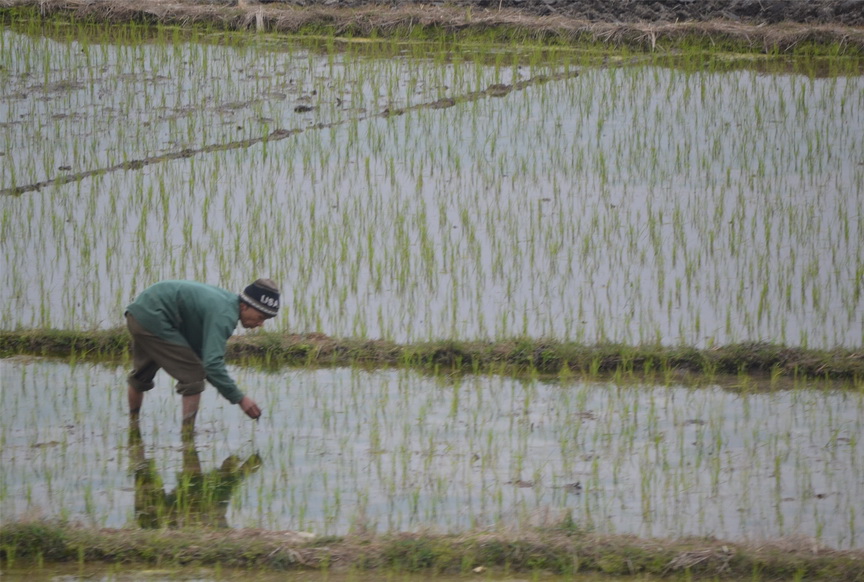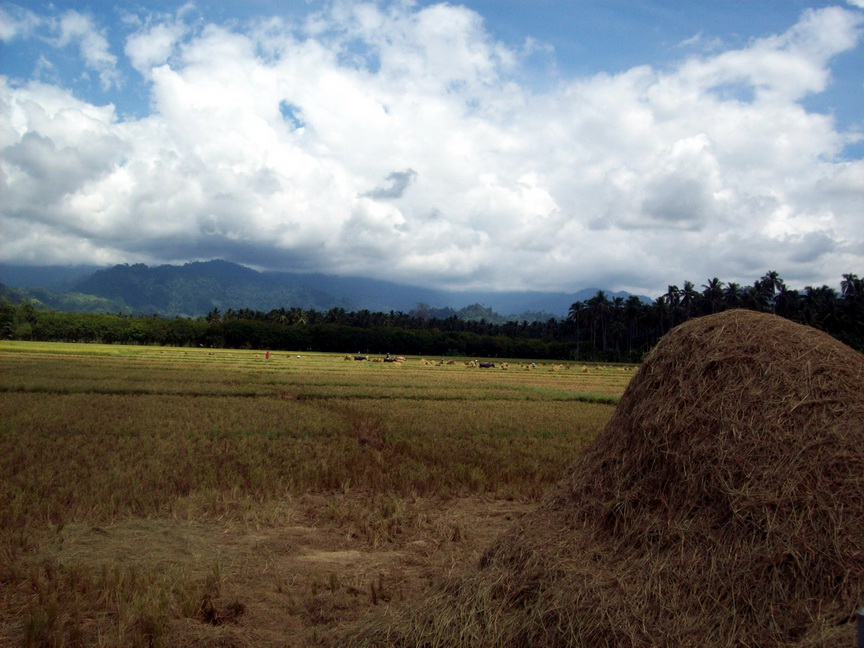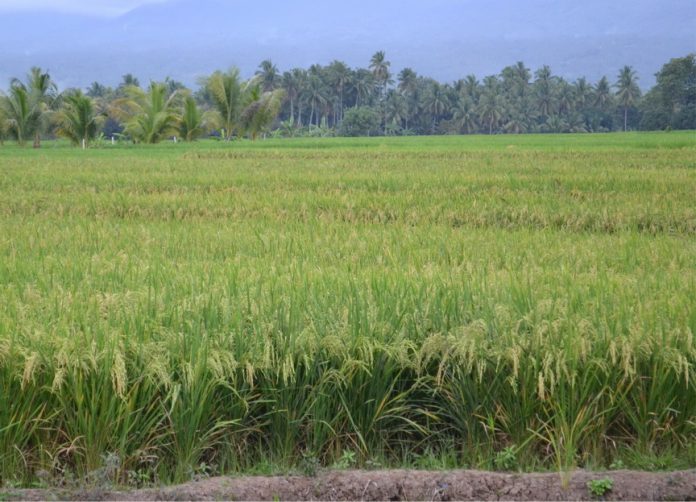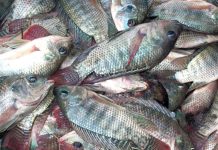“The rice self-sufficiency target is an upwardly moving target that is always out of reach. We are like Alice in Wonderland: We have to keep running just to stay in place.” – Dr. Gelia T. Castillo in Rice is Life
***
Filipino plant pathologist Dr. Benito Vergara worked at the Laguna-based International Rice Research Rice Research Institute (IRRI) from 1961 to 1995. He died in 2015 at the age of 81.
Unknown to most Filipinos, Dr. Vergara contributed significantly on rice research, particularly on studies on deep water rice, flood-tolerant rice, and cold-resistant rice, varieties which are valuable to increased rice production. He also focused on the physiology of rice plant flowering, and developed rapid generation methods for rice.
In 1975, he wrote a book entitled “Science Principles in Rice Farming” to explain not only the “why’s” but also the “how’s” of good rice-growing practices.
Since it was written especially for extension workers, the IRRI was initially not interested with the book. It was renowned Filipino agricultural journalist Zacarias Sarian who saw the book’s potentials and published it. But when other countries started to ask permission to translate the book into their own language, IRRI decided to publish it in 1979 with better illustrations.
In 1980, then President Ferdinand E. Marcos published a Tagalog version.
Today, Dr. Vergara’s “Farmer’s Primer on Growing Rice” is touted as the rice farmer’s bible, whatever his religion. It has been translated into 42 languages, including Chinese, French and Spanish – and still counting!
 “It may be the most widely translated agricultural book in existence,” Dr. Vergara told this author. “It never occurred to me that the book would be really that popular.”
“It may be the most widely translated agricultural book in existence,” Dr. Vergara told this author. “It never occurred to me that the book would be really that popular.”
The book’s popularity is perhaps due to the fact that rice is the most important economic activity on this planet. This is particularly true in Asia, where rice is grown on 250 million farms, most of which are smaller than one hectare.
“Rice is the one thing that truly defines Asia,” said Dr. Ronald Cantrell when he was still the IRRI Director-General. “From Pakistan to North Korea to Papua New Guinea and Indonesia, rice is the one thing shared by all. Asia has no common political systems, no common religions, no common philosophies and no shared social values – however, each and every day most Asian join in together to eat rice.”
Despite rising per capita income that had led to a more diversified diet in neighboring Asian countries, rice remains the staple food of Filipinos. Studies have shown that for every peso spent on food, 20 centavos go to rice.
“If we did not have rice, our deepest comfort food, we would probably feel less Filipino,” the late food columnist Doreen Fernandez once said.
From 1980s to 1990s, a Filipino consumed an average of 92 kilograms. The consumption went up to 111 kilograms from 2008 to 2009. From 2009 to 2010, it even increased to 119 kilograms.
Today, Filipinos consume about 31,450 metric tons of rice per day, according to Secretary Emmanuel F. Piñol of the Department of Agriculture.
Philippine history is lacking if rice is not included in its annals. “The history of rice cultivation in the country dates back at least 3,000 years,” wrote Dr. Gelia T. Castillo, an academician and national scientist. “The building of rice terraces came a bit later.”
It was in 1576 that an account of rice cultivation was recorded. By 1668, someone wrote that “rice usually does not last longer than the time it takes to harvest, since the rest they pay in tribute or sell to get the cash to pay the tribute.”
Recently, the Grains Retailers’ Confederation of the Philippines, Inc. urged the government to approve the proposal of the National Food Authority to import 250,000 metric tons of rice to boost its buffer stock. At that time, the NFA had only a total inventory of 1.2 million 50-kilogram bags, equivalent to two days of the country’s total rice consumption.
 This situation seems to be a frequent event. “The story of rice in the Philippines is indeed a history of recurring shortages,” Castillo wrote. “To illustrate this dramatically, a news item dated March 10, 1872 had the caption ‘Rice Shortage Feared.’ On about the same date, but a century later, March 11, 1972, the headline of a news item was ‘Government Certified Rice Shortage’ and a total importation of 500,000 metric tons from Thailand was contracted.”
This situation seems to be a frequent event. “The story of rice in the Philippines is indeed a history of recurring shortages,” Castillo wrote. “To illustrate this dramatically, a news item dated March 10, 1872 had the caption ‘Rice Shortage Feared.’ On about the same date, but a century later, March 11, 1972, the headline of a news item was ‘Government Certified Rice Shortage’ and a total importation of 500,000 metric tons from Thailand was contracted.”
Rice self-sufficiency, so goes a saying, is national security. Once it is achieved, it is a matter of celebration, but when it is on the contrary, it is a matter of shame and blame. “Rice self-sufficiency has positive political value, just as a rice shortage, with delayed importation and an increase in rice prices, can bring political misfortune,” Castillo noted.
This happened in 199’s rice crisis. The principal cause was: “the failure of government to anticipate a shortfall in domestic production and to plan imports to make up for the shortfall.”
As a result of the rice crisis, the secretary of the Department of Agriculture was sacked. “Because of the high political cost, no politician wants to get caught with a rice shortage; increased rice price; or, worst of all, queues of urban consumers waiting to buy cheap rice, especially on a rainy day,” Castillo wrote.
Rice is not originally from the Philippines, although it is the staple food of Filipinos. Until now, it is being debated where rice originally comes from. D.H. Grist, in his book Rice, pointed this out: “We do not know the country of origin of rice, but the weight of evidence points out to the conclusion that the center of origin of rice is southeast Asia, particularly India and Indo-China, where the richest diversity of cultivated forms has been recorded.”
Cultivation of rice, however, dates to the earliest age of man. “Carbonized paddy grains and husks, estimated to date 1000 to 800 B.C. have been found in excavations at Hastinapur in Uttar Pradesh, India. Specimens of rice have been discovered in China dating from the third millennium B.C. and the Chinese term for rice appears in inscription dating from the second millennium B.C.”
Perhaps not too many know that there are four major kinds of rice culture: rainfed paddy, upland rice, deep-water rice and irrigated lowland rice. Rainfed paddy, most common in South and Southeast Asia, depends on monsoonal rains to soften the fields for plowing.
Upland rice is dependent on rainfall. Because the land is not diked, there is no standing water and weeds and pests are a problem, particularly weeds since standing water discourages weeds.
Deep-water rice culture (or floating rice) is practiced primarily in the heavy monsoonal areas of east Pakistan, India, Indonesia, Thailand and Vietnam. Irrigated lowland planting is the method used in China, Japan, Korea and Taiwan.
In the Philippines, much of the country’s irrigated rice is grown on the central plain of Luzon, the country’s rice bowl. Other major rice-producing regions are located in Mindanao (23%), Central Luzon (16%), Western Visayas (13%), Southern Tagalog (10%) and Ilocos (9%).
The rest of rice comes mainly from various coastal lowland areas and gently rolling erosional plains, such as in Mindanao and Iloilo.
Rainfed rice is found in the Cagayan Valley, in Iloilo province, and on the coastal plains of Visayas and Ilocos region. Upland rice is grown in both permanent and shifting cultivation systems scattered throughout the archipelago on rolling to steep lands.
“Rice is the staple food of Filipinos in most parts of the country, although corn also contributes 20% or more of caloric intake from cereals in parts of Visayas and Mindanao,” said “Rice Almanac: Source Book for the Most Important Economic Activity on Earth.” “For the country as a whole, rice accounts for 41% of total caloric intake and 31% of total protein intake.”
Although rice (known in the science world as “Oryza sativa”) is basically a complex carbohydrate, its protein contains all eight of the essential amino acids and complements the amino acids found in many other foods. It is low in sodium, fat, and fiber, it is easily digested.
Most of the rice available in the market is enriched, which means, besides its other assets, it is also supplemented with iron, niacin, and thiamine. But most of these added nutrients are lost if rice is washed before cooking or drained afterward. (To be continued)







